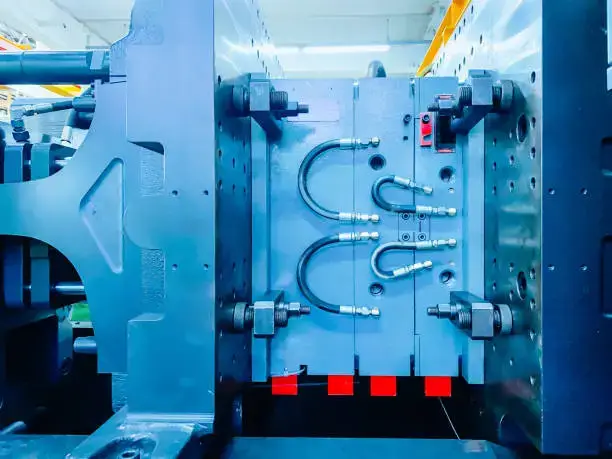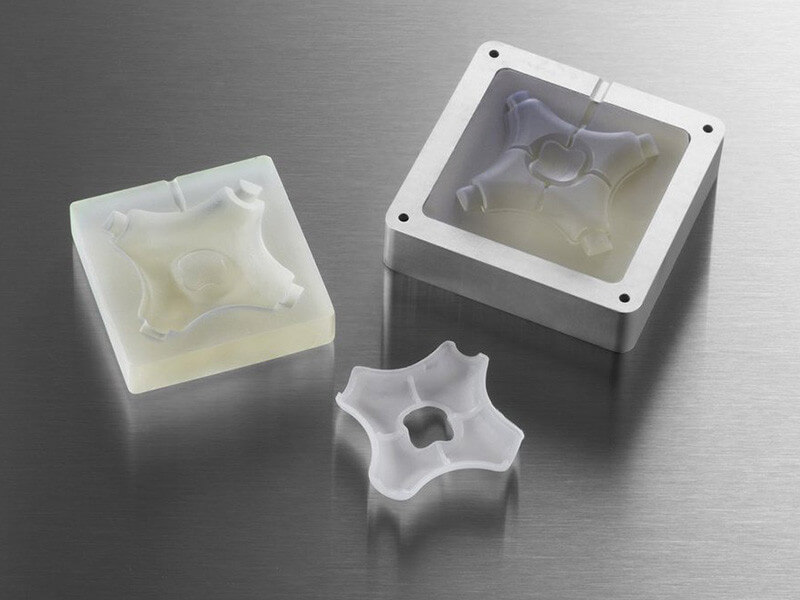
Brittle injection molded parts can lead to functional failures, product defects, and increased manufacturing costs. Understanding the root causes of brittleness and implementing effective solutions is crucial for ensuring high-quality injection molded parts. 이 기사에서는, we explore the key factors that contribute to brittleness in injection molded parts and how to mitigate these issues.
1. Causes of Brittleness in Injection Molded Parts
1.1 Poor Material Selection
플라스틱 재료의 선택은 최종 제품의 인성에 큰 영향을 미칩니다.. 충격 저항이 부족한 저품질 수지 또는 재료는 부서지기 쉬운 분사 성형 부품을 초래할 수 있습니다.. 일부 수지는 자연적으로 충격 저항이 낮습니다, 스트레스가 많은 응용 프로그램에 부적합하게 만듭니다.
1.2 가보 불량
잘못된 배럴 온도 설정 또는 나사 설계가 잘못되면 수지의 부적절한 용융 및 가소화는 재료 저하를 유발할 수 있습니다., leading to brittle injection molded parts. 또한, inconsistent melt homogeneity can cause localized weak points within the molded product.
1.3 Excessive Shear Stress
High shear rates during the injection process can break down polymer chains, weakening the material structure and reducing toughness. Excessive shear heating can also lead to thermal degradation, further contributing to brittleness.
1.4 Inadequate Mold Design
Sharp corners, thin walls, or poorly designed gating and runner systems can cause stress concentrations, 부서지기 쉬운 골절로 이어집니다. 또한, 부적절한 환기는 에어 트랩을 유발할 수 있습니다, 성형 부분의 약점에 기여합니다.
1.5 잘못된 처리 매개 변수
- 주입 온도가 낮습니다: 불충분 한 가열은 재료 흐름이 열악하고 불완전한 융합을 유발할 수 있습니다., 성형 부품의 약한 영역을 초래합니다.
- 높은 주입 속도 또는 압력: 과도한 스트레스는 재료 특성을 저하시킬 수 있습니다, Brittleness로 이어집니다.
- 보류 압력이 충분하지 않습니다: 공극과 재료 압축이 좋지 않을 수 있습니다, 기계적 강도 감소.
- 짧은 냉각 시간: Inadequate cooling time can result in incomplete crystallization of semi-crystalline polymers, making the final product more brittle.
1.6 Moisture Contamination
Some plastics, like ABS, PC, and Nylon, absorb moisture from the environment. If not dried properly before processing, hydrolysis can occur, breaking polymer chains and causing brittleness. 또한, excessive moisture content can lead to surface defects like silver streaking, which affects product aesthetics and strength.
1.7 Excessive Use of Regrind Material
Using too much regrind or contaminated recycled material can alter the molecular structure, reducing toughness and increasing brittleness. The repeated thermal cycles experienced by regrind materials lead to polymer degradation, reducing overall part performance.
1.8 Inadequate Cooling and Ejection
Rapid cooling or uneven temperature distribution can create internal stresses, leading to brittle failures. Poor ejection systems may also cause cracks in the part, especially if excessive force is applied during demolding.
2. 주입 성형 부품의 브리티 니스를 줄이기위한 솔루션
2.1 재료 선택을 최적화하십시오
- 적용에 적합한 충격 저항과 인성이 높은 수지를 선택하십시오..
- 재료 유연성을 향상시키기 위해 충격 수정 자 또는 첨가제를 사용하십시오.
- 과도한 재료의 과도한 사용을 피하고 품질을 보장하십시오..
- 기계적 성능을 향상시키기 위해 코 중합체 블렌드를 사용하는 것을 고려하십시오.
2.2 자재 취급 및 준비를 향상시킵니다
- 제대로 건조합니다 흡습성 재료 like Nylon and PC before processing.
- Store raw materials in a dry environment to prevent moisture absorption.
- Regularly check material specifications and avoid using degraded resins.
2.3 Optimize Injection Molding Parameters
- Set appropriate melt temperatures to ensure full plasticization and reduce material degradation.
- Adjust injection speed and pressure to avoid excessive shear stress.
- Ensure proper holding pressure and time to improve material compaction and reduce internal voids.
- Optimize cooling rates to prevent thermal stresses and ensure proper crystallization.
2.4 Enhance Mold Design
- Avoid sharp corners and sudden thickness transitions to reduce stress concentrations.
- Use rounded edges and uniform wall thickness to improve strength.
- Optimize gating and runner design to ensure even material flow.
- Improve mold venting to eliminate air traps and prevent weak points in the part.
2.5 Improve Cooling and Ejection Systems
- Ensure uniform cooling to prevent residual stresses that can cause brittleness.
- Use proper mold release agents or design improvements to facilitate smooth ejection.
- Optimize ejection pin placement to minimize stress during part removal.
2.6 Conduct Quality Control and Testing
- Perform impact resistance tests and tensile strength evaluations to identify brittle areas.
- Regularly inspect raw materials for contamination or degradation.
- Monitor process parameters using real-time sensors to detect inconsistencies.
- Use non-destructive testing methods such as ultrasonic inspection to detect internal defects.
2.7 고급 제조 기술을 구현하십시오
- 내부 응력을 줄이기 위해 가스 보조 주입 성형을 고려하십시오.
- 순차적 사출 성형을 활용하여 재료 분포를 향상시킵니다.
- 성형 부품의 내부 응력을 완화하기 위해 어닐링 프로세스를 적용합니다..
결론
주입 성형 부품의 Brittleness는 여러 요인에서 발생할 수 있습니다., 재료 선택을 포함하여, 처리 조건, 그리고 곰팡이 디자인. 적절한 자재 취급을 구현함으로써, 처리 매개 변수 최적화, 곰팡이 설계 개선, manufacturers can produce durable and high-quality injection molded parts. Addressing these factors not only enhances product performance but also reduces production defects and costs. 또한, utilizing advanced manufacturing techniques such as gas-assisted molding and annealing can further improve part durability.
For expert injection molding solutions, consult industry professionals like XLD 금형, ensuring precision and quality in every molded component.

